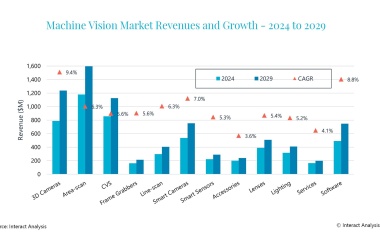Fully scalable all-perovskite tandem solar cells
Two different prototypes show promising efficiencies.
Researchers at the Karlsruhe Institute of Technology (KIT) have developed a prototype for fully scalable all-perovskite tandem solar modules. These modules have an efficiency of up to 19.1 percent with an aperture area of 12.25 square centimeters. This result, the first of its kind reported worldwide, was made possible by improving efficiency with optimized light paths, high-throughput laser scribing, and the use of established industrial coating methods. A second perovskite/CIS tandem solar cell reaches an efficiency of nearly 25 percent.


In recent years, solar cells made of perovskite semiconductors have shown great promise thanks to their high efficiency and low production costs. But the efficiency of an individual perovskite cell is still limited in spite of enormous progress. This limitation can be overcome by stacking two solar cells with different band gaps. The band gap is a material characteristic that determines the part of the incident spectrum that a solar cell absorbs to generate electricity. Tandem solar cells use a broader range of the spectrum and generate more electricity, making them more efficient.
Perovskite solar cells with a tunable band gap are ideal tandem partners not only for solar cells made of other materials but also for all-perovskite tandem solar cells. They feature low-cost production, solution-based processing methods, mechanical flexibility, and the freedom to combine cells with different perovskite band gaps. Researchers expect all-perovskite tandem solar cells to gain a high market share in the future if they can satisfy requirements for stability and scalability. Scalability means that new designs can be applied at larger scales and in mass production.
The department headed by Ulrich W. Paetzold from the Institute of Microstructure Technology (IMT) and the Light Technology Institute (LTI) at KIT has succeeded in developing a scalable prototype for high-efficiency all-perovskite tandem solar modules. The researchers were able to scale up individual perovskite cells with an efficiency of up to 23.5 percent at an aperture area of 0.1 square centimeters to all-perovskite tandem solar modules with an efficiency of 19.1 percent at an aperture area of 12.25 square centimeters. The aperture area is the usable part of the surface that is not covered by electrodes, frames or fasteners. At approximately five percent, the loss of efficiency when upscaling is relatively low. “This is the first report of an all-perovskite tandem solar module worldwide,” says Bahram Abdollahi Nejand, team leader for all-perovskite tandem solar modules.
This remarkable result is based on three key innovations. The researchers increased the efficiency by optimizing the light path and reducing reflections in the solar cell architecture. They implemented an efficient layout for tandem solar modules using high-throughput laser scribing that enables the production of functional tandem solar mini-modules with two-terminal interconnected cell strips. Lastly, they used coating processes – blade coating and vacuum deposition – that are already established industrial practice. “Achieving this outstanding research result was only possible with the combined expertise at KIT. This will provide motivation for further work in academia and industry to make the sustainable and pioneering technology of all-perovskite tandem solar modules commercially viable through upscaling and improvements in stability,” says Paetzold.
Combining perovskites with other materials such as copper-indium-diselenide (CIS) or copper-indium-gallium-diselenide (CIGS) promises further benefits. Such combinations will make it possible to produce light and flexible tandem solar cells that can be installed not only on buildings but also on vehicles and portable equipment. Such solar cells could even be folded or rolled up for storage and extended when needed, for example on blinds or awnings to provide shade and generate electricity at the same time. An international team of researchers headed by Marco A. Ruiz-Preciado and Ulrich W. Paetzold has succeeded in producing perovskite/CIS tandem solar cells with a maximum efficiency of 24.9 percent. “This is the highest reported efficiency for this technology and the first high efficiency level reached at all with a nearly gallium-free copper-indium diselenide solar cell in a tandem,” says Ruiz-Preciado. Reducing the amount of gallium results in a narrow band gap of approximately one electron volt, which is very close to the ideal value of 0.96 eV for the lower solar cell in a tandem.
To adjust the band gap for efficient tandem integration, perovskites with high bromine content are usually used. However, this often leads to voltage drops and phase instability. Since the researchers and their partners use CIS solar cells with a narrow band gap at the base of their tandems, they can produce their upper cells using perovskites with low bromine content, which results in cells that are more stable and efficient. “Our study demonstrates the potential of perovskite/CIS tandem solar cells and establishes the foundation for future development to make further improvements in their efficiency,” says Paetzold. “We’ve reached this milestone thanks to the outstanding cooperation in the EU’s PERCISTAND project and, in particular, thanks to our close cooperation with the Netherlands Organisation for Applied Scientific Research.” (Source: KIT)
References: B. A. Nejand et al.: Scalable two-terminal all-perovskite tandem solar modules with a 19.1% efficiency, Nat. Energy 7, 620 (2022); DOI: 10.1038/s41560-022-01059-w • M. A. Ruiz-Preciado et al.: Monolithic Two-Terminal Perovskite/CIS Tandem Solar Cells with Efficiency Approaching 25%, ACS Energy Lett. 7, 2273 (2022); DOI: 10.1021/acsenergylett.2c00707
most read


Europe's automotive industry is increasingly focusing on automation
The European automotive industry continues to invest heavily in the automation of its production, as preliminary figures from the International Federation of Robotics (IFR) show.

Growth in machine vision thanks to AI software
The global machine vision market recorded revenues of $5.6 billion in 2024, representing a decline of 3.9% compared to 2023.

Qioptiq Photonics becomes Excelitas Germany
The renaming is part of the global consolidation of the Excelitas Group.

Lenze Group reorganizes its Executive Board and focuses on transformation
As part of the reorganization, Dr.-Ing. Claus Bischoff (CTO) left the company in April and Dr. Achim Degner (CFO) in July.






